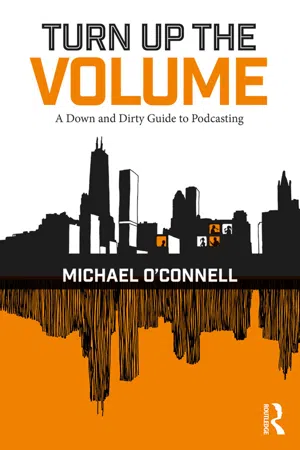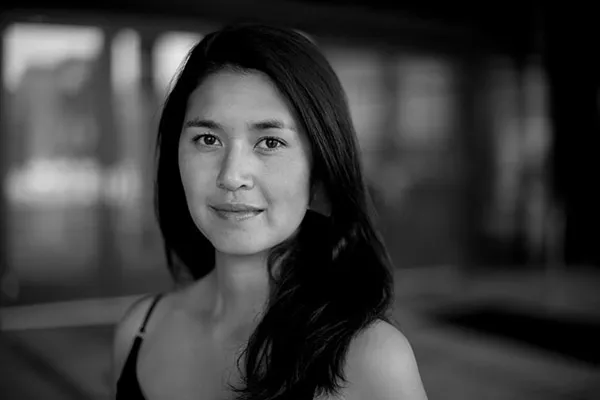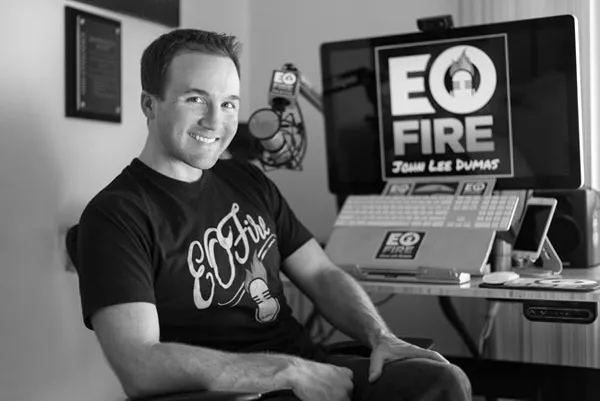![]()
1
The Tenets of Good Podcasting
The first and most important thing you need to ask yourself is “Should I be doing a podcast?”
If you’re reading a book about how to do podcasts, you probably have an answer already. Or at least you think you do.
This is the moment to face some hard truths about podcasting.
As stated in the introduction, unless you’re a famous wrestler, reality star or celebrity, you’re going to start off with a small audience. You can grow that audience over time with a lot of hard work, but your audience is going to be smaller than you think—a lot smaller.
You need to have a passion for your topic.
Nearly all the podcasters interviewed for this book stressed the importance of having a passion for your topic, almost above any other piece of advice they had to offer. For this reason, it’s the first tenet of podcasting: Have a passion for the topic. Are you going to be as excited about this topic in episode 200 as you were in episode 1?
If the topic doesn’t make, and keep, you fired up, how can you make your audience care? How can you keep them interested in what you have to say?
Adam Sachs, the former CEO of Midroll Media, said that podcasters should really love the medium and love whatever it is that they’re talking about.
“I think a unique kind of a corollary similar to that is having a unique point of view and format,” he said. “You know, if there are 400,000 or 500,000 podcasts out there, why are people going to choose yours? We always talk about how we’re competing for people’s time almost more than anything, right? There’s only so many podcasts that people can listen to when you think about their daily lives and the other media that they’re consuming. Coming to the table with something unique—that makes it very clear that there’s a reason for people to tune in and listen. I think it is really important.”1
Laura Mayer, director of production at Panoply, launched her first podcast early in her career.
Starting a podcast is “what made me realize what I ultimately wanted to do with my life, which ended up being making podcasts,” she said. “But I think that it’s a good way to kind of put yourself on the line in terms of making your voice heard in particular. And that’s something that can help clarify a lot of direction for people…. Pick one thing you really want to talk about and you think you can talk about every week and with other people, ideally, or … by yourself and just try it.”2
Despite all the hoopla around the podcasting boom, audience size should not be something that holds you back from starting a podcast.
“If the first podcast you put out there has three listeners, that’s fine,” Mayer said. “And it shouldn’t be about listenership necessarily. There’s a lot right now, of course, with the podcast boom and a lot of business interest in that kind of thing. No one, when they’re starting a podcast, should necessarily think, ‘I’m going to start my first podcast and I’m going to be a star.’ I think that starting your first podcast is a great way to find your own voice and … figure out how you can best utilize it in whatever medium you end up making things in.”3
Podcasting Is Hard; Do the Work
Producing a podcast with any regularity is difficult. Beyond having passion for the topic, you need to be committed to doing the work necessary to succeed.
“It’s hard,” said Todd Cochrane, CEO of Raw Voice, the company behind the Blubrry podcast hosting platform. “This is hard. I always tell content creators that ask me this question, ‘Are you passionate enough to talk a couple times a week about a topic for two years? Is there enough stuff in your head, or is there enough material or enough people, to be able to sustain a show for a couple of years?’”4
Two years is not just a magic number Cochrane pulled out of the air.
“I’d like them to think about two years instead of six weeks or seven weeks, because what we see—and this number has stayed pretty steady throughout the years—about 50 percent of shows, new shows, never make it to episode 7,” he said. “They quit. They figure, ‘Oh, I’ve only got 100 people listening to me’ or ‘I only got 50, and I’m doing horrible and this is too hard.’ If they can make it past [episode] 7, usually those shows that do, they’ll make it to about episode 25. That’s where we see another drop-off. We typically will lose some more there.
“Doing audio content, while it seems easy, you have to have fresh stuff to talk about. If you don’t have a topic that lends itself to feeding you fresh information every week, you’re going to have a very, very tough time.”5
You need a constant flow of fresh ideas, a good topic, enthusiasm for that topic and the energy to keep a podcast going week in and week out for an indefinite period of time.
“For me, it’s easy. I do a tech show,” said Cochrane, who hosts Geek News Central and co-hosts The New Media Show. “There’s always new stuff. But if I was doing a show talking to business leaders, then I’d have to be scrambling every week to get a guest or two booked to get them interviewed. That’s hard, hard work. For me, I do an hour-and-a-half, two hours’ worth of research, and, bam, I’m up and running. I do a 70-minute show and it just flows. But [for] some of these other folks, it can be a real struggle.”6
A typical 35-minute episode of It’s All Journalism, for example, takes about 45 minutes to an hour to record. But before we even turn on the microphones, hours of work go into pre-production, from choosing and researching a topic, to finding a guest or guests, to juggling schedules, to determining whether we’re going to record in studio or by phone or Skype and writing up questions. That’s all the work before the interview. Once the audio is in the can, it’s post-production time. We have to edit it, upload it to our audio server, write up a story to accompany the audio on our website and share it out on social media. It’s almost a second job.
“The biggest advice is ‘Understand that it’s going to be hard and, if you’re going to talk about something, you have to have a topic you’re super passionate about,’” Cochrane said.7
Fresh out of college, Megan Tan, creator of Radiotopia’s Millennial podcast, faced a lot of uncertainty and insecurity about producing her first podcast episode. Although she had a degree in photojournalism, what she really wanted to do was audio storytelling for radio, but she had no experience and no idea how to start out.
“Millennial was not supposed to be like a sustainable podcast,” she said. “It was not to have been for a whole bunch of strangers to hear, really. It was just like a portfolio piece. I essentially wanted to become a radio producer. I didn’t know where to begin. So I thought, ‘Why not make a portfolio that I can show future employers?’ And that was Millennial.”8
The first season of Millennial follows Tan as she moves out of her parents’ home and into her boyfriend’s apartment, finds a part-time job as a waitress and—with a great deal of trepidation—launches her podcast.
“Nothing was really planned, to be honest,” Tan said. “I really felt like I didn’t have the confidence to go out and essentially talk to people and tell them I was a reporter or a producer, because in my mind I wasn’t one yet. I just thought: ‘Why not pull from an experience that’s right under my feet? I’ve analyzed and read a lot of books about story and narrative. And I know what makes a really great narrative. Story is change.’ And I thought, ‘Man, in your 20s, all you do is change.’”9
Figure 1.1 Megan Tan is the host of Millennial.
A Podcast Is a Promise; Post Regular Episodes on Time
One of the key decisions you need to make when you’re planning a podcast is how often you expect to post a new episode. Will it be monthly, bimonthly, weekly, biweekly, daily? It’s important for a couple of reasons.
First, determining how often episodes are posted will help establish the workflow. Be realistic about how much time you have to commit. If you’re doing it as a hobby or a once-in-a-while thing, posting biweekly or monthly is probably an easy stretch.
The downside of taking so long to post, though, is it’s harder to build an audience when there’s too much time between episodes.
Figure 1.2 John Lee Dumas is the host of EOFire.
John Lee Dumas posts a new episode of his podcast EOFire (Entrepreneur on Fire) seven days a week.
“Back in 2012, I was, every day, driving to a job I did not like at all, and kind of my solace was to listen to audio books,” he said. “That got a little expensive, because audio books aren’t cheap. So, I kind of found podcasts as a great, free, targeted, and just valuable source of the audio for my commutes to work and workouts at the gym.”10
Dumas gobbled up all the entrepreneur-based podcasts he could find, like Planet Money, Freakomonics and Pat Flynn’s Smart Passive Income Podcast.
“I was like, these guys have got something going,” Dumas said. “It’s pretty cool. But the problem is Pat’s only doing two a month. I need more content than that. I’m driving to work five days a week. I’m hitting the gym three or four days a week. So I said, ‘I need to find a daily podcast that’s interviewing entrepreneurs so that I can have one every single day as I’m driving to work.’ It didn’t exist. And I said: ‘You know what? I don’t like my job and I love Gandhi.’ And he says, ‘Be the change you want to see in the world.’ I wanted to see a seven-day-a-week podcast exist—it didn’t. I said: ‘Why not me? Let’s do this.’”11
On the other end of the spectrum, you have someone like Dan Carlin, who releases a new episode of Hardcore History every three or four months. Those episodes, however, are highly researched and detailed, professionally produced audio performances—lectures, almost—about significant moments in history. They’re gems of long-form storytelling, well worth the wait.
Likewise, t...


